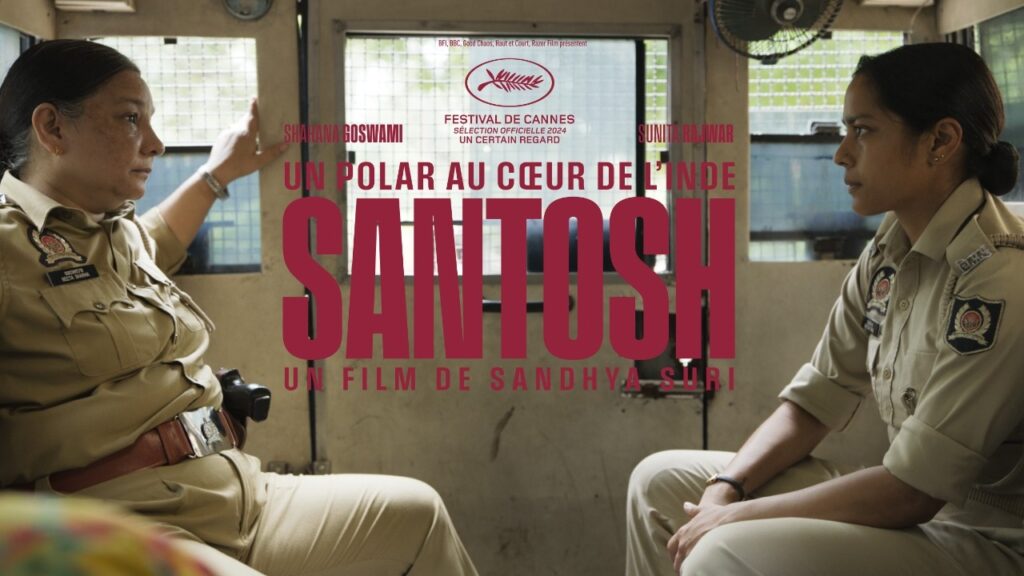“Santosh” Film Blocked in India Over Sensitive Themes: A Clash of Art and Censorship

In a move that has ignited a firestorm of controversy, the Indian government has blocked the release of the much-anticipated film Santosh, citing concerns over its sensitive themes. The decision has sparked debates about freedom of expression, artistic integrity, and the role of censorship in Indian cinema. While supporters argue that the film tackles critical social issues that need to be addressed, critics claim that the film’s portrayal of certain topics goes too far and may destabilize societal harmony.
The Plot and Sensitive Themes of Santosh
Santosh, directed by acclaimed filmmaker Arvind Joshi, was billed as one of the most important films of the year. The movie follows the journey of Santosh, a young man from a small village who seeks to break free from societal norms and pursue a life of personal freedom. The film explores complex themes such as caste discrimination, religious intolerance, mental health struggles, and the fight for gender equality.
The movie has been hailed for its raw, unflinching portrayal of the challenges faced by marginalized communities in India. Santosh’s character, a representation of the oppressed, is shown confronting not only the rigid social structures of caste but also navigating the mental toll of living in a country rife with religious tensions. The film touches on taboo subjects that are often avoided in mainstream cinema, including the stigmatization of mental illness and the harsh realities of living under the pressure of societal expectations.
However, it is precisely these themes that have led to the film’s eventual ban in India. According to the Central Board of Film Certification (CBFC), Santosh was deemed to contain material that could “incite communal disharmony” and “create a negative impact on the social fabric.” The CBFC raised objections to several scenes in the film, which they argued could potentially exacerbate religious and caste tensions in a country already grappling with such issues.
The Censorship Controversy
The Indian film industry has long been a battleground for issues of censorship. While films are often censored or edited for explicit content or violence, Santosh’s ban has sparked wider concerns about artistic freedom. Proponents of the film argue that it is a bold attempt to address important social issues and provide a platform for the voices of those who are often silenced in mainstream media. They suggest that the film’s portrayal of caste and religious dynamics is not only a reflection of the real world but a necessary conversation starter.
Critics, however, argue that such films can fuel existing tensions and create division among different communities. They believe that the portrayal of sensitive themes without careful handling could lead to misinterpretations and violence. In the case of Santosh, some individuals have raised concerns that the film’s direct approach to caste-based discrimination and religious intolerance might inflame already fragile communal relations in certain regions of India.
The controversy surrounding Santosh is not the first of its kind. Over the years, numerous films have been subjected to bans, cuts, or delays in India for similar reasons, ranging from depictions of violence to discussions of politics, religion, and identity. The tension between artistic freedom and censorship is especially high in a country like India, where societal sensitivities are often heightened due to its diverse religious, ethnic, and cultural landscape.
Artistic Freedom vs. Social Responsibility
The issue of censorship in India is a reflection of the larger debate between artistic freedom and social responsibility. Filmmakers and artists often contend that their work is a form of expression and should not be stifled by restrictions, while critics argue that content that may be seen as offensive or inflammatory should be regulated in the interest of maintaining societal peace and harmony.
In the case of Santosh, this clash is especially pronounced. The film’s supporters argue that art should be a tool for change, helping audiences confront uncomfortable truths about issues like caste, gender, and religious identity. In a country like India, where caste-based discrimination remains a deeply entrenched issue, films like Santosh are seen as essential for educating the public and inspiring social reform.
On the other hand, the government’s decision to block the film underscores the challenges of balancing freedom of expression with national security concerns. The Indian government has consistently emphasized the need to protect public order and prevent content that could disrupt social harmony. Given the nation’s history of religious and caste-based violence, authorities argue that the film could exacerbate these tensions.
Public Reactions and Divided Opinions
The ban on Santosh has led to a polarized response from the public. Supporters of the film have launched online petitions and protests, demanding its release and arguing that such a ban represents an attack on free speech. They claim that the film does not seek to promote violence but rather highlights the need for societal reform. Many have expressed disappointment that the film, which addresses issues central to Indian society, is being suppressed for merely presenting an honest depiction of life for marginalized communities.
On the other hand, opponents of the film’s release have rallied behind the government’s decision, arguing that the movie could lead to unrest, particularly in areas already dealing with communal tensions. Some individuals feel that the film’s portrayal of certain themes may alienate certain sections of society and create unnecessary conflicts.
The Future of Censorship in Indian Cinema
The Santosh controversy raises broader questions about the future of censorship in Indian cinema. While the CBFC continues to play a key role in regulating film content, there are increasing calls for reform. Many filmmakers and activists argue that the system is outdated and often fails to reflect the realities of contemporary Indian society. Some have called for the establishment of a more transparent and nuanced film certification system that allows for greater freedom of expression while still maintaining sensitivity to social concerns.
The film’s ban has also sparked wider discussions about the role of social media in promoting or hindering artistic freedom. In today’s digital age, films often gain international attention before they are even released in theaters. As a result, many believe that public opinion, rather than official censorship bodies, may ultimately determine the fate of films in India.

